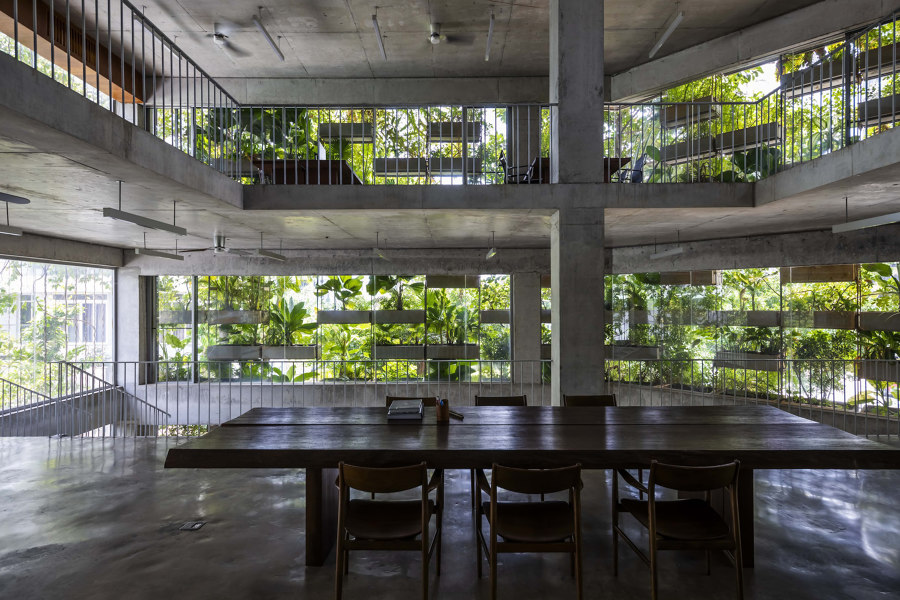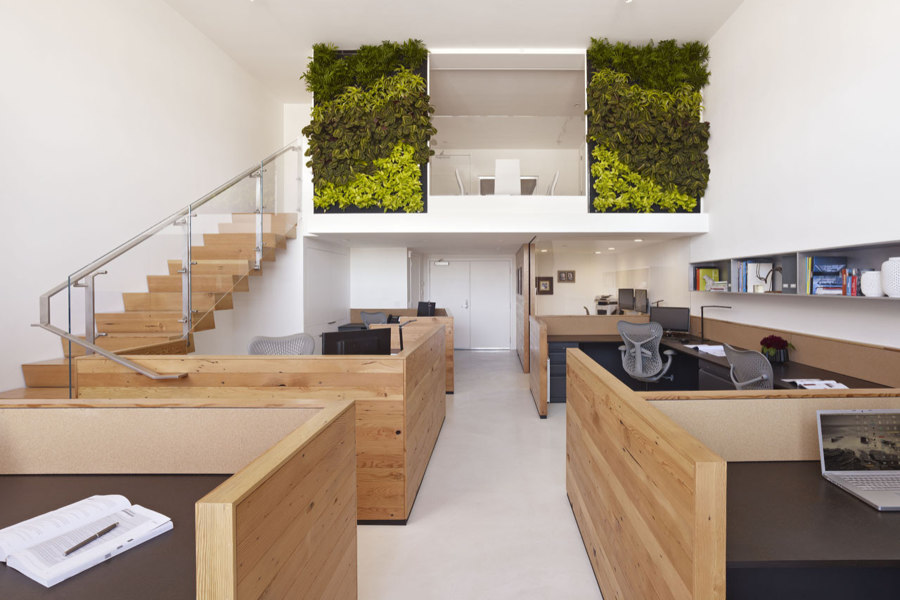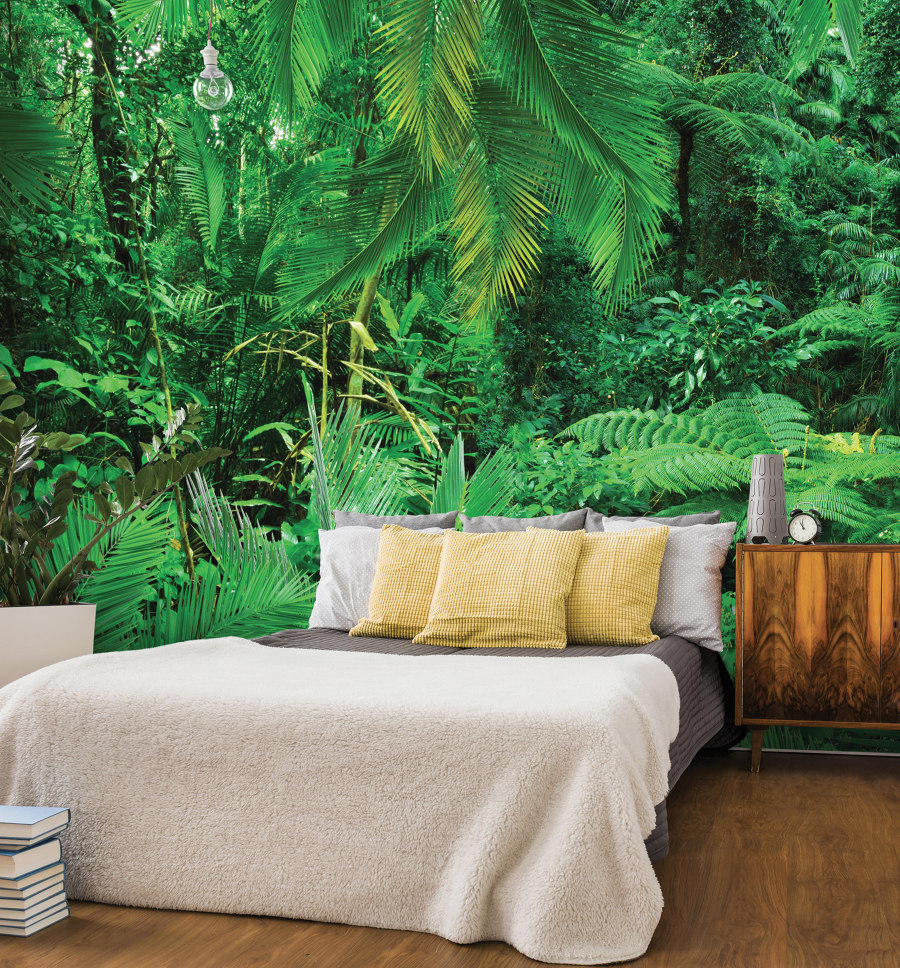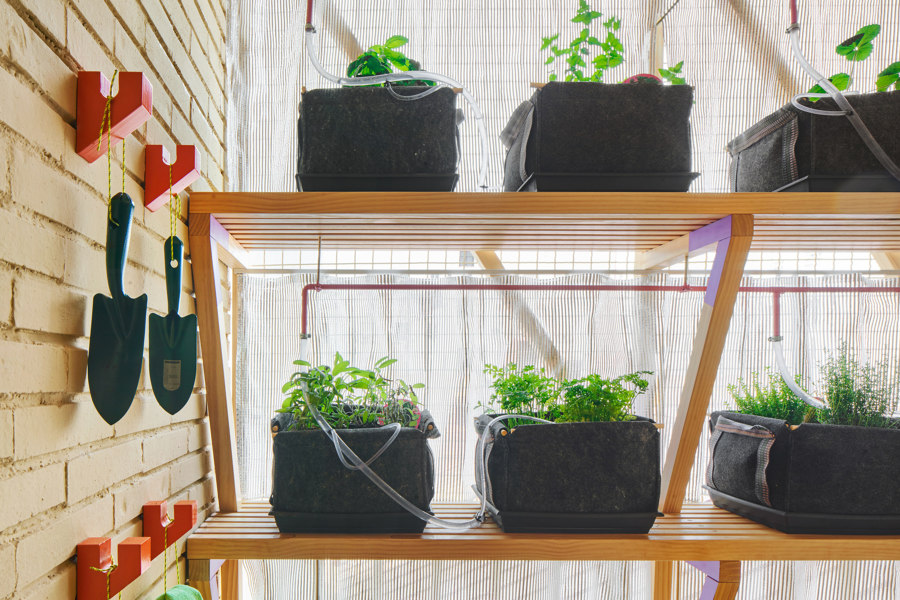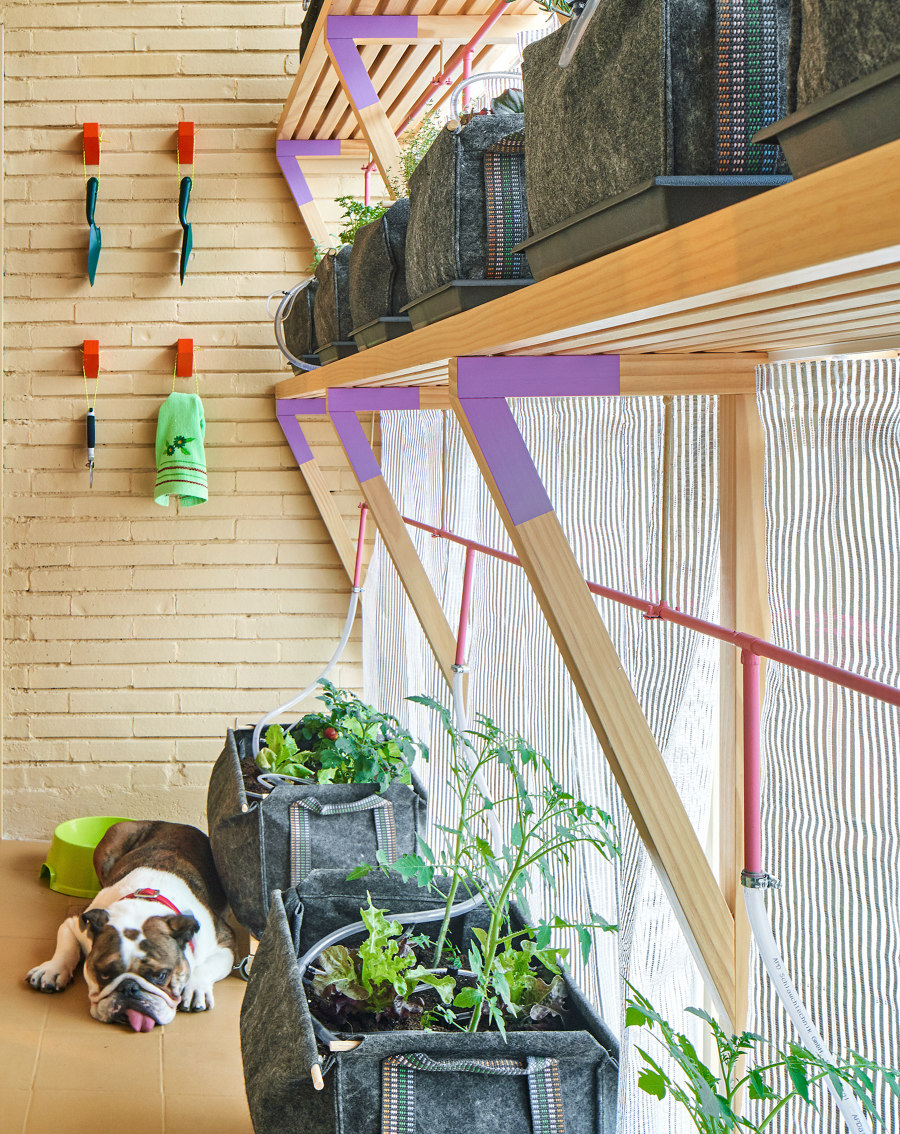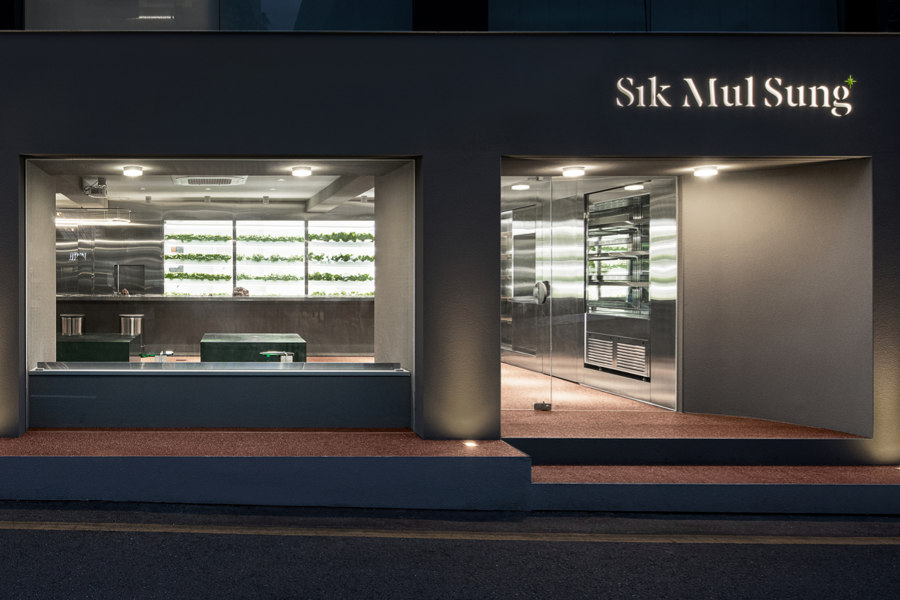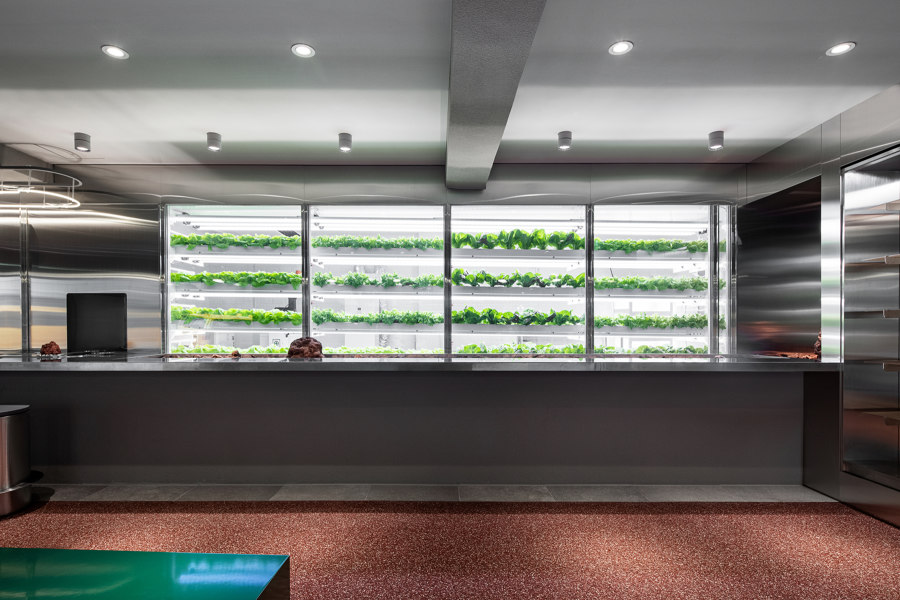How to use vertical farming for sustainable living
Scritto da James Wormald
28.08.23
By applying the agricultural practice of vertical farming to design, architects can take advantage of the natural world, to improve our most urban environments.
The Urban Farming Office in Ho Chih Minh City, Vietnam, seeks to return green space to the city using the building’s facade as a structure for vertical urban farming. Photo: Hiroyuki Oki

The Urban Farming Office in Ho Chih Minh City, Vietnam, seeks to return green space to the city using the building’s facade as a structure for vertical urban farming. Photo: Hiroyuki Oki
×Increasing in both size and number, cities worldwide are experiencing accelerated growth. With green land regularly lost to either urbanisation or its effects – such as rising sea levels or natural disasters – and expanding populations meaning more mouths to feed, the farming and agricultural industries are in crisis. Viewed by many as the solution, vertical farming is the practice of stacking layers of crops atop each other, using humanity’s latest design and engineering tech to grow more with less space.
More traditional horizontal farmland, however, does more for the environment than simply growing our food. The open-air green spaces often serve as natural habitats, air filtration and temperature control for the surrounding area. By stepping up the concept of vertical farming into the world of architecture, we can bring all the goodness of the farm, straight to our doorstep.
Urban Farming Office’s local vegetation (top), living walls at Buck O’Neill Builders (middle) and the humidity-loving Bathyard Home (bottom). Photos: Hiroyuki Oki (top), Bruce Damonte (middle), Imagen Subliminal (bottom)
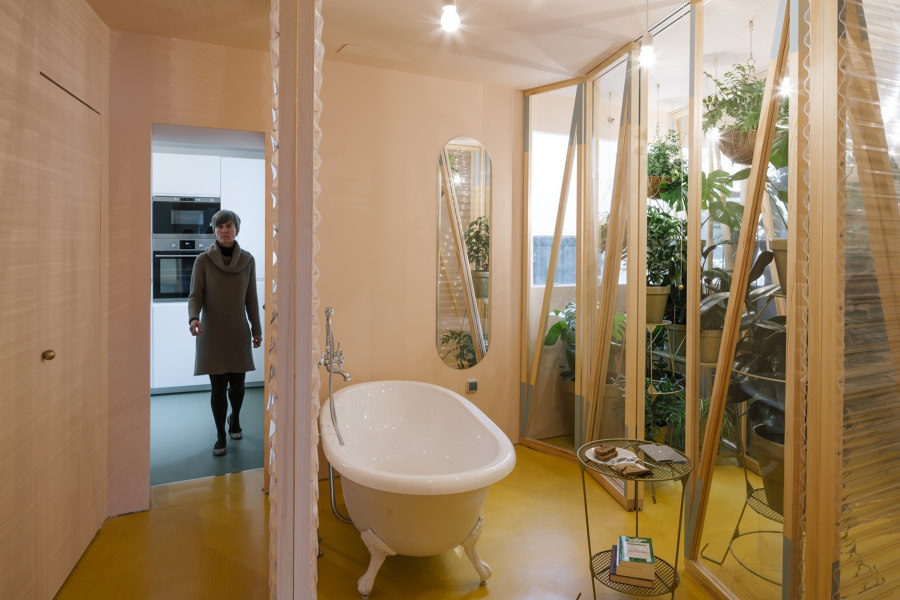
Urban Farming Office’s local vegetation (top), living walls at Buck O’Neill Builders (middle) and the humidity-loving Bathyard Home (bottom). Photos: Hiroyuki Oki (top), Bruce Damonte (middle), Imagen Subliminal (bottom)
×Improve air quality in the street, in public spaces and at home
Absorbing and re-emitting the sun’s heat, urban infrastructure such as roads and buildings create a heat island effect. In order to address and reduce this, many new buildings tend to employ green facades. The Urban Farming Office building by VTN Architects, for example, aims to reverse the divergence of Ho Chi Minh City from its origins as a sprawling tropical forest. ‘Demonstrating the possibility of vertical urban farming,’ introduce VTN Architects, its facade creates a ‘comfortable microclimate throughout the building, filtering sunlight and purifying the air.’
Many new buildings employ green facades to address the heat island effect
It’s not only buildings’ exteriors where vertical farming can have a positive effect on air quality. At The Offices of Buck O’Neill Builders by jones | haydu, for example, a living wall draws and filters air through its variety of plants, before recycling it back into the space with a connected fan. And in the Bathyard Home, Husos Architects has demonstrated the value that certain humidity-loving plants can bring. ‘In a strategic location between two humid spaces,’ explain the architects, the potted, raised and hanging plants absorb excess moisture and therefore reduce humidity and mould in the small, central bathroom.
A photo-real jungle created with LONDONART’s Gravitoni wall covering (top) and Nook Architects’ three-dimensional layered greenhouse at END THE ROC (bottom). Photos: Yago Partal (bottom)
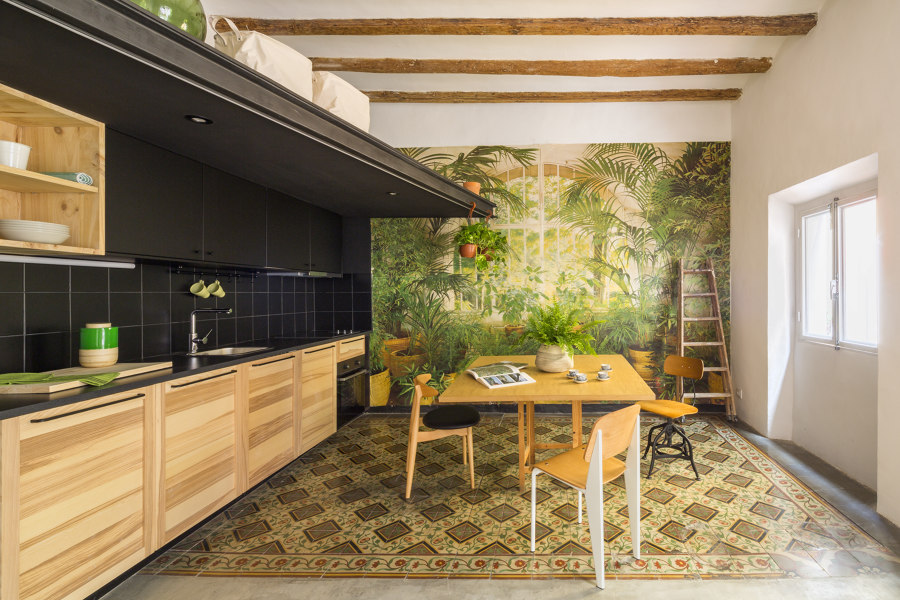
A photo-real jungle created with LONDONART’s Gravitoni wall covering (top) and Nook Architects’ three-dimensional layered greenhouse at END THE ROC (bottom). Photos: Yago Partal (bottom)
×The healthy aesthetic of flexible realism
Although beneficial on a personal and public level, natural products and installations such as living walls require intricate irrigation systems, taking up more space and demanding regular maintenance. Such an ongoing expense may be out of the question for some project budgets, but the biophilic bonus of the aesthetic alone helps to improve mental health and wellness.
LONDONART’s Gravitoni wallpaper wall covering, for example, provides an ultra-realistic depiction of a tropical jungle on a surprisingly flat surface. But despite the lack of any live greenery, the highly detailed covering still manages to induce the positive benefits of biophilia, without the extra upkeep. And at the END THE ROC apartment in Barcelona, Spain, meanwhile, Nook Architects ‘made use of a pre-existing wall covering,’ by ‘juxtaposing real plants with the printed images behind,’ as the studio explain, enhancing the depth of the tropical surface.
The intricate kitchen garden wall with grey water drip irrigation on the balcony of Husos Architects’ apartment for a man and his dog. Photos: José Hevia

The intricate kitchen garden wall with grey water drip irrigation on the balcony of Husos Architects’ apartment for a man and his dog. Photos: José Hevia
×The cooling effects of a kitchen garden wall
In the sweltering summer temperatures of Madrid, Spain, Husos Architects were tasked with improving a small apartment for their client and his dog. Along with opening out the entire apartment from its east to west walls, thus allowing air to circulate through the property at will, the studio also suggested a vertical edible garden situated on the west-facing balcony. ‘The vegetation helps prevent the home from overheating and generally functions as a thermal cushion, cooling the interior and avoiding the use of air conditioning,’ explain Husos Architects.
‘The vegetation helps prevent the home from overheating, functioning as a thermal cushion’
By sacrificing the space of the external balcony, the shelving and drip-irrigation-fed grow bags of the vertical garden – served with recycled grey water from the shower – allow the client to keep his apartment cool and his plate full of fresh, homegrown produce.
N.THING’s concept vertical farm restaurant, Sik Mul Sung, gives customers the opportunity to experience the full journey of their fresh ingredients firsthand. Photos: Yungjoon Choi
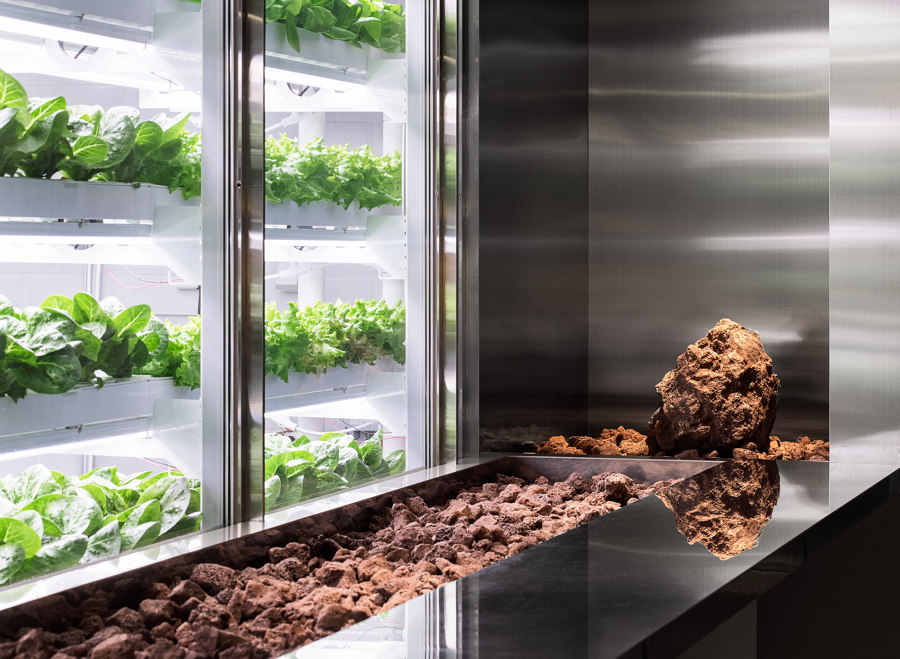
N.THING’s concept vertical farm restaurant, Sik Mul Sung, gives customers the opportunity to experience the full journey of their fresh ingredients firsthand. Photos: Yungjoon Choi
×Farm to plate: when restaurants grow their own
As a company that builds and operates smart farms with the ultimate goal of a working container farm on Mars, N.THING sought to expand their business by cutting out the wholesalers and serving directly to customers via the Sik Mul Sung eatery in Seoul, South Korea. With customers able to ‘see plants growing under artificial light and the person taking care of them,’ explains project architects layer studio and unseen bird, a glass-edged cultivation room allows them to ‘experience the processes of growing, harvesting, cooking and eating, all in one place.’ By growing their own ingredients in small-scale vertical container farms, restaurants are able to guarantee customers an ultra-local, low-emission product.
© Architonic
Head to the Architonic Magazine for more insights on the latest products, trends and practices in architecture and design, or find inspiration in a whole world of projects from around the globe through ArchDaily’s architecture catalogue.

